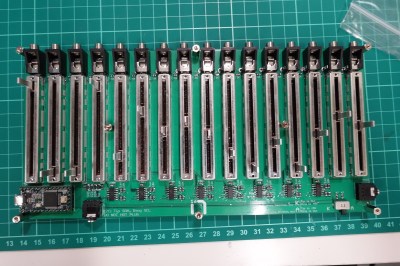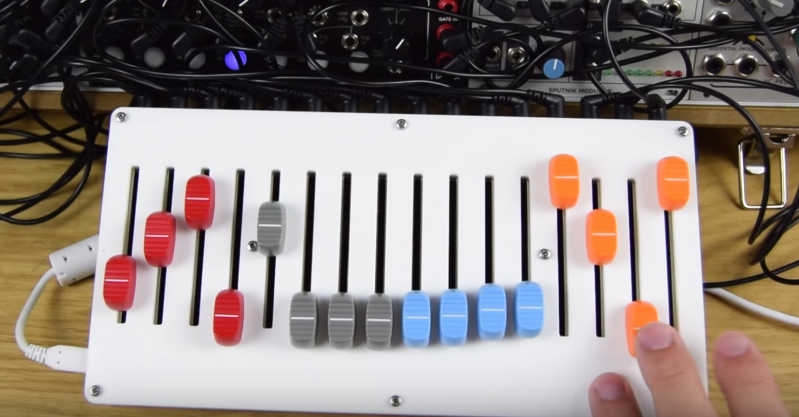Here at Hackaday, we love knobs and buttons. So what could be better than one button? How about 16! No deep philosophy about the true nature of Making here; [infovore], [tehn], and [shellfritsch] put together a very slick, very adaptable bank of 16 analog faders for controlling music synthesis. If you don’t recognize those names it might help to mention that [tehn] is one of the folks behind monome, a company built on their iconic grid controller. Monome now produces a variety of lovingly crafted music creation tools.
Over the years we’ve written about some of the many clones and DIY versions of the monome grid controller, so it’s exciting to see an open source hardware release by the creators themselves!

The unambiguously named 16n follows in the footsteps of the monome grid in the sense that it’s not really for something specific. The grid is a musical instrument insofar as it can be connected to a computer (or a modular synth, etc) and used as a control input for another tool that creates sound. Likewise, the 16n is designed to be easily integrated into a music creation workflow. It can speak a variety of interfaces, like purely analog control voltage (it has one jack per fader), or i2c to connect to certain other monome devices like Ansible and Teletype. Under the hood, the 16n is actually a Teensy, so it’s fluent in MIDI over USB and nearly anything else you can imagine.
Everything is nicely documented and fully open source. There is a thorough overview with general tips here. Sources and more detail can be found in the repo (they suggest making pull requests with improvements too). Even better than sources is this very friendly build guide that walks through assembling the PCBA, testing, and bolting together the stacked-layers type frame.















Thank you for uploading a PDF of your schematic unlike so many. I’d recommend not overlapping symbols in your schematics, and also not leaving question marks in your sheet ports.
Thanks, Bob. The schematics are getting slowly tidied as people a) moan at me and b) offer better suggestions. The PDF is actually a tad out of date (not electronically, just visually) so I’ll make sure we get a new one up soon.
I usually just add a comment that all question marks are load bearing and integral to the documents structural rendering.
On a serious note, some mighty beautiful design on this build, as well as the grid and arc panels too!
I’m afraid the grid and arc and nothing to do with me – those are tehn’s. But it’s a high standard to live up to!
This is the sad state of music today! Rock-N-Roll is dead!
What’s so bad about a guitar and a bucket of drugs, that’s what I’d like to know.
Ah, the good ol’ days.
Thanks, Bob – I’ll make sure we put an issue in the repo to tidy the PDF up! I’m aware it could do with some TLC.
For some reason this just came to mind… for those in this and other ranges of spectrum analysis… are the equalizers (if used as) like this basically a manual leveling head as would be found on say a Tektronix SG504?